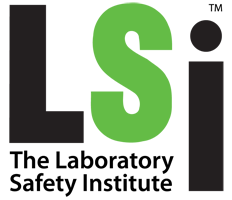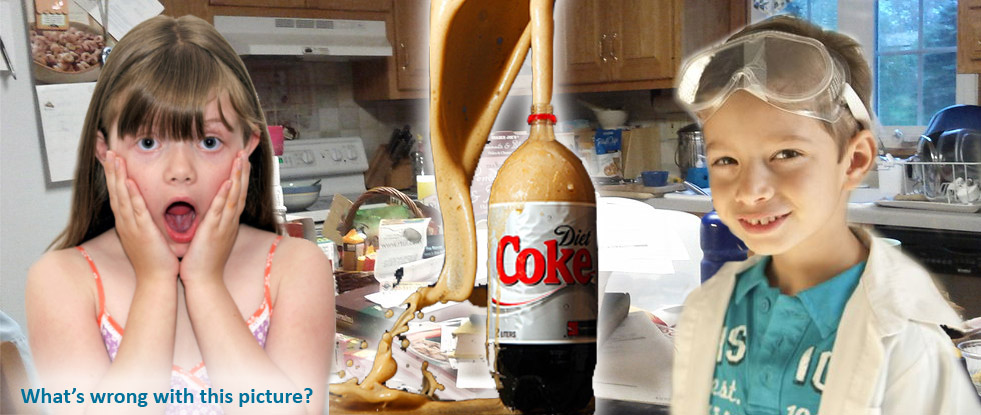As COVID-19 forces many science classes into the home, teachers and parents are left wondering, "How safe are home science experiments?"
For three families in Bethesda, Maryland, the answer to that question, tragically, was "not safe enough."
One year on New Year's Eve, four boys (three high school students and a college freshman) were killed while experimenting with explosives in the garage of a Brazilian diplomat's home. Two of the teenagers died instantly in the explosion. The other two died in the hospital from injuries sustained in the 3 a.m. incident.
This unfortunate tragedy raises questions about the safety of home science experiments. It makes us ask: "what can parents, children, teachers, and science supervisors do to make home science be safe science?" Examples of problems are far too prevalent.
In Rhode Island, two boys were burned when a science fair project overturned while being transported on the school bus. The caustic solution injured both the student carrying it and the boy sitting next to him.

A volcano model science experiment
In a separate incident, several school children were injured when a model volcano exploded while being demonstrated at a school bus stop. The project had been successfully demonstrated at school during the day. However, on the way home, the bus stop demonstration did not have the same happy ending.
There are three common ways that science experiments end up being conducted at home. (1) The school suggests or requires a project. (2) The child is given a toy or kit that involves science experiments. Or (3), the child decides to try something on her or his own.
In each case, there are a few simple and inexpensive precautions that should be observed. These precautions will help to ensure that home science experiments continue to be enjoyable and positive learning experiences.
We can learn two important lessons from our country's major chemical companies. First, in their research laboratories scientists are not allowed to work alone. As with other potentially risky activities, such as swimming or skiing, working alone is a bad practice. Second, these research scientists do only those experiments that are approved. This means that the health and safety consequences of new experiments are thoroughly reviewed and discussed before they conduct the experiment. If it can't be done safely, they are not supposed to do the experiment.
Why are children doing unsupervised and unauthorized experiments? In fact, they shouldn't be. Children need to be taught by their teachers and their parents that they should not work on science experiments without adult supervision. And, they also need to be taught the importance of conducting only approved experiments.
Responsibilities of Parents and Teachers
Both parents and teachers have a role to play in encouraging safe science in the home. Parents have several important responsibilities. Clearly, it is important that they teach their children these two golden rules of science safety:
- Don't experiment without adult supervision.
- Do only approved experiments.
Parents need to supervise their children's home science activities. For experiments arising out of purchased toys and kits, only the published experiments should be performed. And, for experiments originating from their child's school, clearly written procedures should be provided so that parents can be confident that what the child intends to do is appropriate.
When parents have doubts or questions concerning the safety of a particular experiment, they should contact a science teacher at their local school. Teachers also should play a key role in making sure that home science is safe science. First, they need to store chemicals and equipment securely. Children do continue to take these and it's the schools' responsibility to see that they are not easily accessible.
In Connecticut, an honors student was taking chemicals from an unlocked chemical stockroom and storing them in his locker before taking them home to his lab. One morning, his locker exploded and eight students were injured.
Two boys were injured in an explosion in a New York school. The explosion took place while the boys mixed chemicals in the stockroom after being sent there as a disciplinary action by the science teacher. One boy lost the sight in one eye.
Two Massachusetts college students were stealing chemicals from the college's stockroom and making rocket fuel in the basement of their dormitory. After several successful launches on the front lawn of the dorm, something went very wrong. One morning, during the loading phase, the fuel mixture exploded and both boys were seriously injured.
The chemical stockroom must be kept locked at all times and students should not be allowed to enter without direct teacher supervision.
Teachers and their schools are, in fact, liable for the health and safety of their students when science projects are assigned as part of the curriculum. If students are expected to do a science fair project, the school is responsible for the project even if the work is done at home. Therefore, teachers need to carefully review each of their student's experiments to help ensure the issues of health and safety are carefully considered.
These same precautions are even more important today with schools shuttered for several months and teacher are looking for way to continue science education at home. The Laboratory Safety Institute recommends that science teachers use a rules agreement as part of all school science projects that will be conducted at home. This agreement lists the safety precautions that must or should be observed. Student and parents are required to sign a statement that they have read, understood, and agree to follow these precautions before the school allows the project to start.
A free sample rules agreement is available from the Laboratory Safety Institute. Call 508-647-1900 or email info@labsafety.org to request your copy. Home science can be safe science. All it takes is for students, parents, teachers, and science supervisors to understand these simple precautions. Let's be sure that your student's next home experiment will be the right kind of learning experience for everyone.


